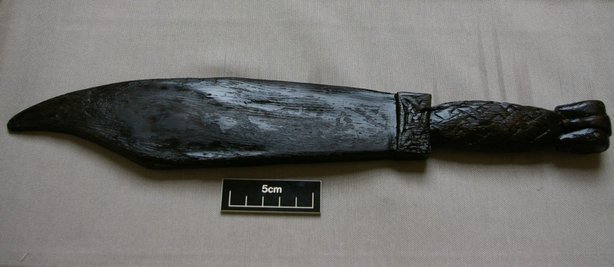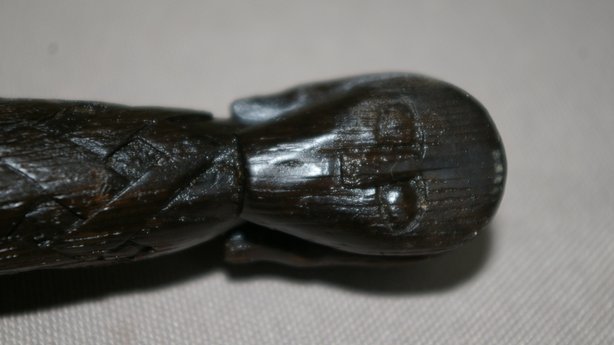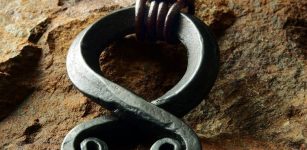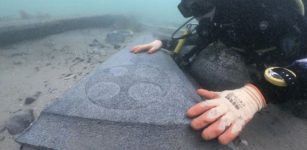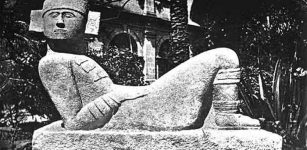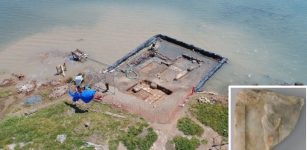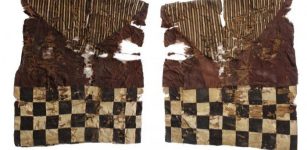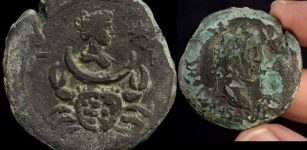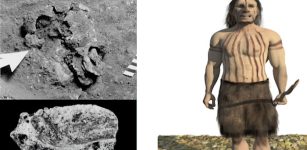1,000-Year-Old Viking Weaver’s Sword Reveals Its Secrets
Conny Waters - AncientPages.com - The 1,000-year-old Viking Weaver's sword is a true archaeological treasure. The sword is a little over 30 cm in length and made of wood. It was never intended for battle.
Found at an archaeological dig at the Beamish & Crawford site in Cork city, Ireland the Viking sword has now revealed more secrets allowing scientists to gain a better understanding of Vikings' presence in the region. As previously reported on AncientPages.com, at the time of the discovery the artifact was still in good condition and archaeologists say it is one of several ancient items of “exceptional significance” unearthed during recent excavations at the historic site.
Credit: BAM Ireland
It’s somewhat of a miracle how the Viking sword and other wooden artifacts survived underground in such pristine condition. The reason it was preserved is most likely because the house where it was found may have burned down. When the roof collapsed it helped preserve the material.
Scientists have examined the tiny Weaver's Sword and say it dates to the Late Viking or Hiberno-Norse era. The Vikings would have been Christian by then, and their days of raiding up and down the coast were long behind them.
“The sword was actually used as part of a weaving loom, and most likely by a woman,” Daniel Breen, Curator of Cork Public Museum, where the object is now part of the collection told the Irish Examiner. “The Viking loom was a vertical contraption, with the same design that continued right through medieval times and up to the modern era. The sword would have been used to hammer in the threads.”
The Weaver's sword was one of several Viking artifacts found at the site. According to Breen, archaeologists also unearthed the lid of a box and the pummel from a saddle, which would be very rare, along with about twelve other bits and pieces. Still, there is little doubt the 1,000-year-old sword is the most precious historical artifact found at the site. The beautiful wooden sword is made of oak, and has two carved heads on the handle. There is also an interlacing pattern all along the blade.
As reported by Irish Examiner, "the earliest Viking raid on the settlement that is now Cork city was recorded in 820. “The Vikings raided the monastery associated with St Fin Barre, where the cathedral is today. The monastery would have been very wealthy, and an easy target. But within a century, the Vikings were settling in Cork, at least for the winter months, and trading goods with the Gaelic Irish. And a few hundred years later they would have been well-established in the area.”
Archaeological digs around the Cork city center have provided information on what Vikings ate and how they constructed their houses. There are few historical sources dealing with the daily life of the Vikings in Cork which is why archaeology cab fill in the gaps and provide a more comprehensive picture of that period. Scientists have discovered that, unlike the Gaelic Irish who tended to live on the high ground, Vikings preferred to build their homes lower down around what is now the city center, along North and South Main St.
Credit: BAM Ireland
Dr. Maurice Hurley, who led the three-year dig at the Beamish & Crawford site emphasizes the Vikings were no barbarians. Vikings like to2 ascribe aesthetic and personal meaning to mundane objects. They would go to a lot of trouble to decorate their hair combs, for instance,” Hurley says.
It is not the first time scientists have discovered that Vikings occasionally carried useless decorative swords that could not be used as real weapons.
Scientists say such Vikings had swords covered with beautiful decorations that became symbols of power and status and they were almost never used because they were never designed for combat. As the role of swords changed in the Viking society, these ‘weapons’ simply became decorative clothing accessories.
So, yes, one can say that Vikings were vain, and showing your importance in the society was common. Vikings also used strong colors as a symbol of status and wealth.
Hurley believes the Weaver sword is special. According to him, "the designs on the sword are evidence of what he calls “a cultural fusion” between the Vikings and the native Irish. “Stylistically, you wouldn’t find something like this in Norway, or in any part of Ireland that had not been settled by the Norse.”
He was particularly taken by the carved heads on its handle, one of which has survived better than the other. “There’s a high level of craftsmanship. The face is quite distinctive, with a very stoical expression.”
"Hurley is currently working on a book on his finds at the Beamish & Crawford site, which he hopes will be published in 2023.
See also: More Archaeology News
Meanwhile, the Weaver’s Sword, and other artifacts from the dig, are on prominent display in the foyer of Cork Public Museum, where they have proven hugely popular with visitors, particularly since the institution reopened last June. While it was closed due to Covid-19 restrictions in 2020/21, museum staff upgraded its website, and the sword attracted a great deal of international interest, the Irish Examiner reports.
Written by Conny Waters - AncientPages.com Staff Writer

